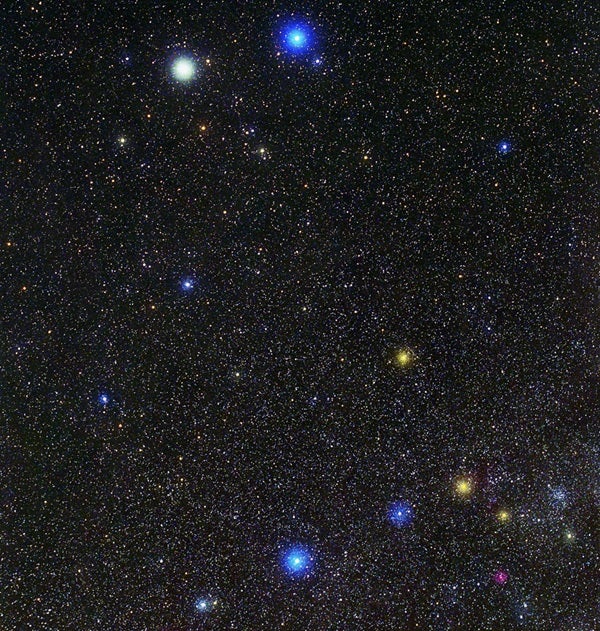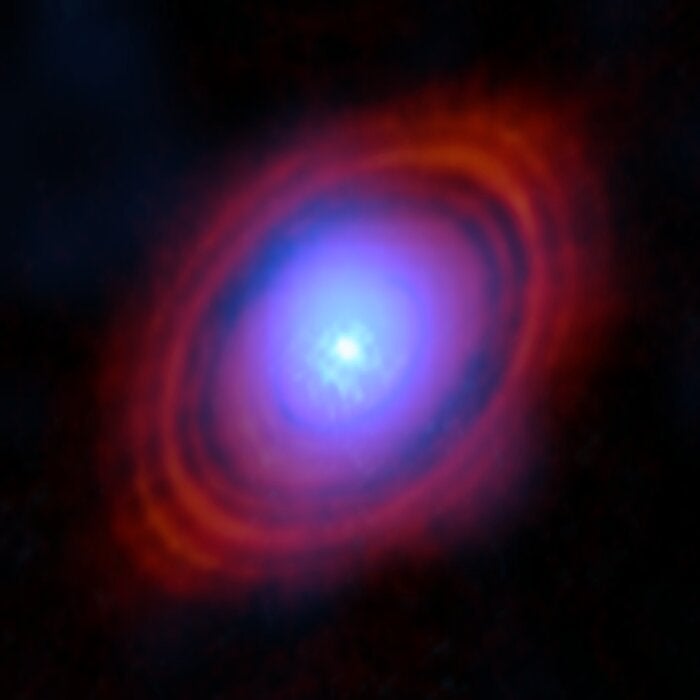One dramatic way to see this effect is by observing colors in double stars, a practice in which no two observers ever agree precisely. At least seven major factors affect how our eye-brain system perceives color, especially in the double stars we view through a scope.
1) Star brightness. A star needs to shine with enough intensity to stimulate the eye’s color receptors; otherwise you won’t perceive color.
2) Surface temperature. Star color is directly related to the star’s surface temperature, where blue stars are hottest, followed by white, yellow, orange, and red.
3) Color vision deficiencies. About one out of 12 men (but only one out of 200 women) have color vision deficiencies, which limit their range of color perception.
4) Age. The eye’s lens yellows with age (due to years of exposure to ultraviolet radiation), which affects color perception. A yellower lens tends to absorb and scatter blue light, so blues and greens become more difficult to tell apart than reds, yellows, and oranges.
5) Simultaneous color contrast. A star’s color may appear slightly different in a deep twilit sky compared to how it seems against a dark sky. Also, as in the case of double stars, two colors close together will alter our perception of either by pushing color onto or enhancing the color of each star (in the mind’s eye), especially if the stars shine with complementary colors.
7) Atmospheric turbulence. The air is in constant motion, causing stars to twinkle and fracturing their light into flashes of color. Under turbulent seeing conditions, a star’s color can change rapidly, making color perception difficult at best. One way to overcome this is to place the star slightly out of focus and observe the overall color of the disk. This technique averages out atmospheric effects.
Vision and you
A 1981 study looked at how three great 19th-century astronomers perceived color in double stars prior to the prejudice of knowing a star’s spectral class or color index. It revealed subjective differences in their color descriptions. Two had a much larger color scheme, while one perceived stars being redder than those documented by the other two observers. But when other astronomers transformed their observations into a min-imal color scheme and then compared them to their spectral class and color index, the observations were more in agreement.
Readers of 19th-century scientific literature might giggle at some of the colors astronomers noted as they observed stars. Take, for instance, Friedrich Georg Wilhelm von Struve’s “olivaceasubrubicunda” (pinkish olive). But few rival the number of those documented by Admiral William Henry Smyth in his 1844 Cycle of Celestial Objects. He listed nearly 40 shades, including vanilla, radish, damson, crocus, sardonyx, and cinereous.
Laugh as we may, in a 2009 Nature article, Jay Neitz, a color vision scientist at the University of Washington, and colleagues found that each human develops a unique perception of color that probably starts at birth. According to Neitz, color is a “private sensation.”
So go out, spy a few double stars, and enjoy the color sensations you get. No matter whether you see a double star pairing as “apple green and grape red” or “melon and plum,” the colors you see belong to you — and you alone.
As always, contact me at sjomeara31@gmail.com.










